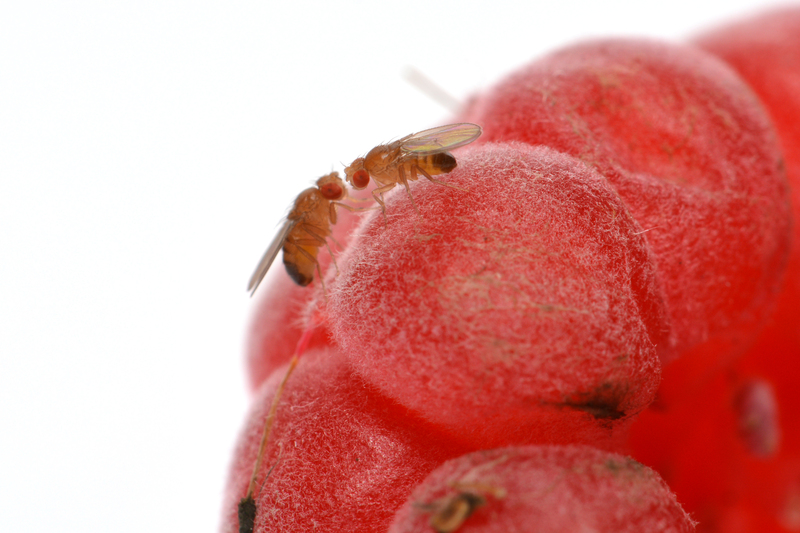Keep Your Velvet Curtains Pristine With These Washing and Care Instructions
Posted on 04/06/2025
Keep Your Velvet Curtains Pristine With These Washing and Care Instructions
If you're searching for the best way to care for your velvet curtains, you've come to the right place. This comprehensive guide offers in-depth velvet curtain care instructions to keep your window treatments fresh, gorgeous, and long-lasting. Proper cleaning and maintenance can dramatically extend the lifespan and beauty of velvet drapes, so read on for expert-approved advice!

Understanding Velvet Curtains: What Makes Them Unique?
Velvet's luxurious soft texture and elegant appearance make it a favorite for interior decor. But to maintain velvet curtains' beauty, you need to be familiar with what sets this fabric apart from others.
- Velvet is a pile fabric, meaning its surface is covered with tiny looped or cut fibers (the "pile").
- The fabric can be crafted from various fibers--natural silk, cotton, or synthetic fibers like polyester.
- It's incredibly soft to the touch but can be sensitive to moisture, heat, and friction.
- Improper washing can crush the delicate pile, causing marks or a dull look.
Understanding these characteristics is the first step in caring for velvet curtains and ensuring they enjoy a long, radiant life in your home.
Why Do Velvet Curtains Need Special Care?
Velvet curtains bring sophistication to any room--but their delicate pile and fiber composition mean that regular cleaning methods can damage or discolor them. That's why it's essential to know how to clean velvet curtains and implement tailored care routines.
- Avoid harsh chemicals that may strip fibers or crush the pile.
- Reduce friction and heat exposure during cleaning or drying.
- Minimize exposure to dust, sunlight, and excess humidity for maximum fabric preservation.
Applying specific washing and maintenance methods will ensure your velvet curtains stay pristine and last for years.
Before You Wash: Things to Consider
Not all velvet curtains are the same. Some may be suitable for hand-washing, while others require professional attention. Before washing velvet curtains at home, do the following:
- Check the Care Label: The easiest way to find the best velvet curtain care instructions is by reading the manufacturer's tag. Look for washing symbols, recommended water temperatures, and instructions about dry cleaning or hand washing.
- Test for Colorfastness: Gently dab an inconspicuous section with a damp white cloth to see if color transfers. If so, do not proceed with wet cleaning at home.
- Determine Fiber Content: Natural fiber velvet (like silk or cotton) usually demands gentler handling than synthetic velvet (polyester or nylon).
Regular Maintenance: Cleaning Velvet Curtains Without Washing
How to Prevent Dust and Keep Velvet Fresh
Frequent, gentle dusting and cleaning are vital for keeping velvet drapes pristine between washes. Here's how to keep them looking fabulous:
- Use a soft-bristled brush or fabric upholstery brush to gently sweep dust and particles in the direction of the nap (the soft pile's texture).
- A handheld vacuum with a soft upholstery attachment can help if curtains accumulate lots of dust. Keep the suction low and brush lightly.
- Spot clean stains as soon as possible.
Avoid shaking or whipping velvet curtains outside, which can crush the pile or cause unnecessary wear and tear.
Spot Cleaning Velvet Curtains: Tackle Stains Carefully
Spills, fingerprints, or pet marks may necessitate immediate action. Here's how to spot-clean velvet curtains safely:
- Blot, Don't Rub: Gently press a clean absorbent cloth or paper towel against the stain to soak up the liquid. Never rub, as this will crush or spread the stain into the pile.
- Apply a Mild Cleaning Solution: Mix a teaspoon of gentle detergent with lukewarm water. Dampen a white cloth with the solution, then carefully dab the stain.
- Blot Again: Use a dry cloth to soak up excess liquid.
- Allow to Air Dry: Leave the curtain undisturbed until dry. Gently fluff the nap (pile) using your fingers or a soft brush if necessary.
Note: For oil-based stains, consult a professional dry cleaner to avoid damaging the fabric.
How to Wash Velvet Curtains at Home (If Permitted)
Hand Washing Velvet Curtains
Hand washing is often the safest option for velvet curtains, especially for cotton, synthetic, or washable blends. Here's how to do it right:
- Fill a bathtub or large basin with cool or lukewarm water.
- Add a small amount of gentle detergent (suitable for delicates or wool).
- Gently submerge the curtain, swirling softly--but do not wring, twist, or scrub the fabric.
- Let the curtain soak for no more than 10-15 minutes.
- Rinse thoroughly with cool, clean water until detergent is gone.
Machine Washing Velvet Curtains
Only machine-wash velvet curtains labeled as machine washable (usually synthetic velvets). Use these precautions:
- Select a delicate or hand-wash cycle with cool water.
- Remove hooks, weights, or rigid embellishments before washing.
- Wash curtains individually or with similar fabrics to avoid abrasion.
- Use a mesh laundry bag for extra protection.
- Never use bleach or harsh detergents.
Tip: Add a towel or two in the machine to minimize friction and prevent the pile from matting.
When to Dry Clean Velvet Curtains
For most velvet curtains, especially those made from silk, natural fibers, or with intricate lining or detailing, professional dry cleaning is safest. Here's why:
- Dry cleaning avoids water that could shrink, distort, or permanently damage the pile.
- Professionals can safely remove stubborn stains while preserving texture and color.
- Drapes that are lined, extra-heavy, or antique should never be washed at home.
Pro Tip: Always use reputable dry cleaners with experience in handling velvet fabrics.
How to Dry Velvet Curtains Properly
Never tumble dry velvet curtains! Heat and tumbling can permanently flatten or damage the pile.
- After hand washing, gently press out excess water (never wring) by laying the curtain flat between clean, dry towels.
- Hang the curtains immediately--preferably on a wide, padded hanger or over a shower rod in their natural, unfolded shape.
- Allow curtains to air dry completely in a well-ventilated room. Avoid direct sunlight, which can fade colors and damage fibers.
- To restore lost pile loft, gently brush the fabric in the direction of the nap once dry.
If wrinkles persist, consider steaming (not ironing!) for a smooth finish, as discussed below.
Removing Wrinkles: Can You Iron Velvet Curtains?
Ironing is rarely, if ever, recommended for velvet drapes. Heat and direct pressure can crush the pile and leave permanent marks. Instead, use a clothing steamer or a bathroom steam treatment:
- Hang the velvet curtain and use a handheld steamer several inches from the fabric's surface to gently remove wrinkles.
- Alternatively, hang the curtain in a bathroom and run a hot shower to fill the room with steam. Let the curtain hang for 10-15 minutes to relax wrinkles, then brush the pile gently if needed.
Never place a hot iron directly on the velvet surface! If you must use an iron, always use a velvet board or thick towel and iron on the reverse side with the lowest possible heat.
Storing Velvet Curtains: Preventing Damage When Not in Use
Proper storage is just as important as regular cleaning. To keep your velvet curtain panels pristine between uses:
- Store in a cool, dry, and well-ventilated area.
- Avoid folding tightly or pressing heavy objects on top of the fabric, which could crush the nap and create hard-to-fix creases.
- If possible, store hanging (using wide, padded hangers or special curtain storage racks).
- If you must fold, lay acid-free tissue between folds to protect the surface.
Keep curtains out of direct sunlight to prevent fading and away from damp or humid environments where mildew could develop.
Prolong Velvet Curtain Life: Expert Cleaning & Maintenance Tips
- Regularly rotate your curtains (if layering or using in a high-traffic room) to prevent uneven fading or wear.
- Use a dehumidifier in humid environments to prevent mold growth.
- Dust window frames and sills to minimize buildup on curtain fabric.
- Consider lining velvet drapes to add weight, block dust, and limit light exposure for longer fabric life.
- Consult professionals for stain removal and deep cleaning when needed.
Remember: Prevention is easier (and cheaper!) than restoration when it comes to maintaining the grandeur of velvet drapery.

Frequently Asked Questions About Velvet Curtain Care
Can I wash all velvet curtains in a washing machine?
No! Only certain machine-washable velvet curtain types (usually synthetic) can be washed this way. Always check the care label first--otherwise, hand wash or dry clean only.
How often should I clean my velvet window curtains?
Dust or gently vacuum every couple of weeks. Full cleaning (hand washing or dry cleaning) is usually needed only once or twice a year unless there's an obvious stain.
Can I use vinegar or baking soda on velvet drapes?
No. Harsh or acidic cleaning agents can damage both natural and synthetic velvet. Always opt for mild, fabric-safe detergents and consult care instructions.
What's the best way to get pet hair off velvet fabric?
A lint roller or slightly damp rubber glove (worn on your hand) used lightly over the surface can help remove hair without damaging the pile.
Is it safe to steam velvet window curtains?
Yes, steaming is the safest way to release wrinkles from velvet curtains. Never touch the surface directly with the steamer, and always steam from a distance.
Conclusion: Keep Velvet Curtains Pristine for Years of Beauty
Velvet curtains add timeless luxury and warmth to any room, but preserving their pristine appearance requires proper washing and care techniques. By following these expert tips for velvet curtain cleaning and maintenance, you can maintain vibrant color, plush texture, and elegant drape for many years to come.
Always check care labels, opt for gentler cleaning methods, and seek professional help for serious stains or delicate fabrics. With proactive maintenance and careful washing, your velvet curtains will continue to be a stunning focal point for your interior space.
For more home care advice and textile tips, explore our site for expert guides and up-to-date cleaning solutions!






